Introduction
In today's dynamic business environment, navigating through challenges and turning around a struggling company requires a strategic and proactive approach. This comprehensive article explores various key strategies and best practices that CFOs can employ to revitalize their organizations. From conducting a thorough assessment and diagnosis of the business to implementing effective financial restructuring and cost efficiency strategies, each step is crucial in charting a course towards recovery and sustained growth.
Additionally, the article emphasizes the importance of clear goal-setting, strategic repositioning, and stakeholder engagement, as well as the critical elements of change management and employee communication. By monitoring and adjusting the turnaround plan and evaluating the success of the strategy through key metrics, CFOs can ensure that their organizations not only overcome challenges but also thrive in the ever-evolving marketplace.
Assessment and Diagnosis
A crucial initial stage in maneuvering a company through difficult periods is to thoroughly assess its financial standing, operational effectiveness, and competitive stance. The insights gained from this comprehensive evaluation illuminate the underlying factors contributing to the company's struggles. For instance, an exhaustive analysis of financial documents such as balance sheets, income statements, and cash flow statements could highlight underperforming products or ineffective processes that are sapping profitability. This process, similar to the medical diagnosis of a patient, allows leaders to map out a precise strategy to revive the company.
Examples from various industries, including healthcare, where up to 60% of innovations fail to be sustained, show the importance of context in adapting and improving operations. Understanding the specific challenges and nuances of a business is crucial, as demonstrated by Dr. Anuradha Pichumani's efforts in implementing the Who's Safe Childbirth Checklist across multiple hospitals in India. Similarly, in the corporate world, where high turnover rates like the 6.1% in the restaurant industry signal operational stress, a keen assessment can lead to targeted interventions to enhance staff retention and stabilize operations.
Hence, it is crucial for organizations to not only recognize but also take action on these vital insights with strategic precision. This approach can make the difference between a business that successfully turns around and one that continues to falter despite potential market opportunities and growth prospects.
Root Cause Analysis
Conducting a Root Cause Analysis (RCA) is a crucial step in revitalizing an enterprise that is encountering difficulties. This analytical process goes beyond surface-level symptoms to unearth the underlying reasons for a company's underperformance. Consider the scenario of an e-commerce website witnessing a downturn in shopping cart conversion rates. The Product Manager tasked with this issue would meticulously dissect every aspect of the sales funnel and customer interaction points to pinpoint the exact cause. Likewise, enterprises must evaluate internal procedures, market dynamics, and technological infrastructure to develop implementable strategies that are not just short-term solutions, but rather long-term enhancements. By doing so, companies can not only resolve current issues but also preempt future setbacks, ensuring a robust framework for sustainable growth and success.
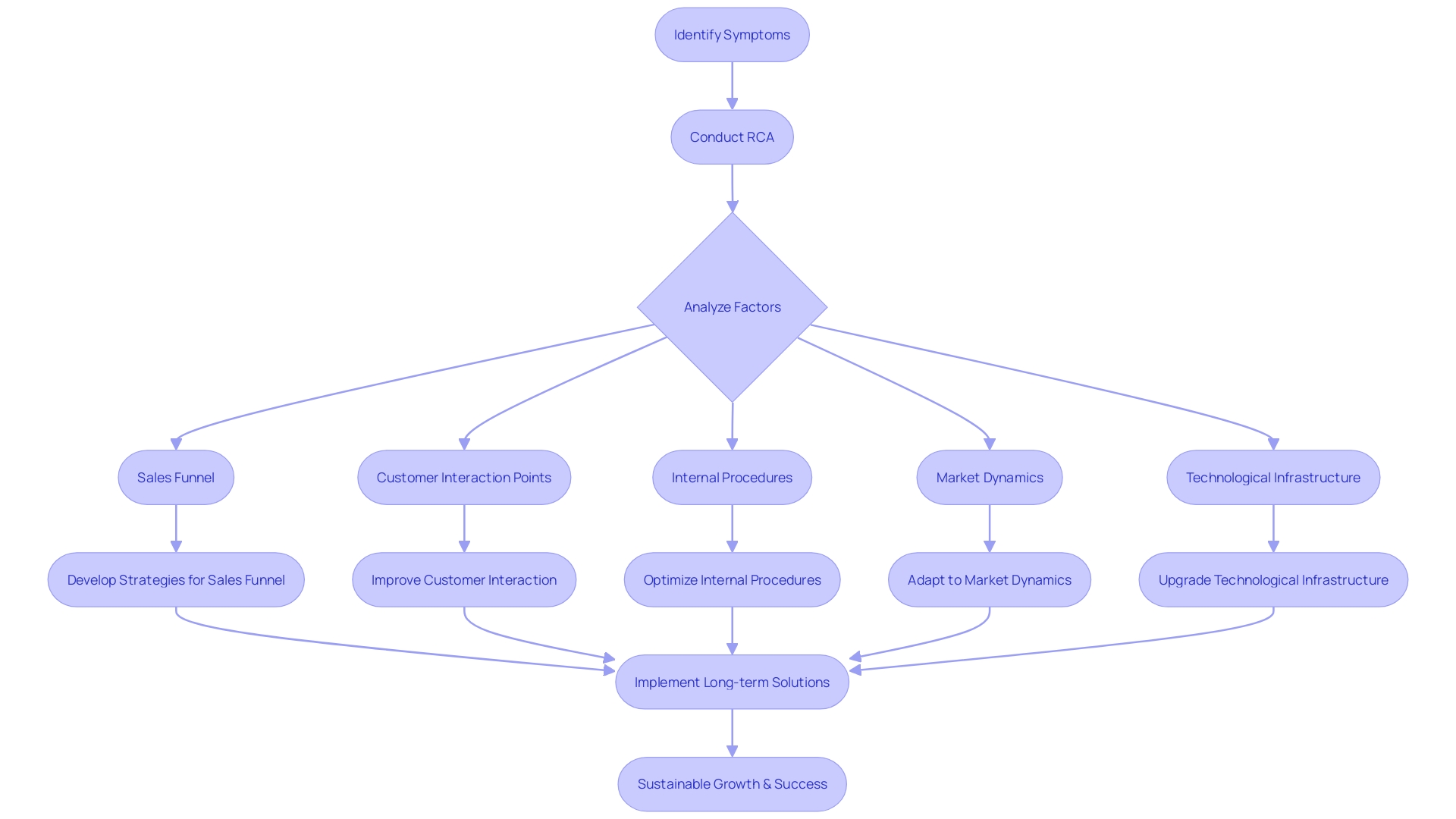
Setting Clear Goals and Objectives
The foundation of any successful company transformation is the establishment of clear, measurable objectives. These goals, which should be precise, attainable, and in harmony with the company's broader purpose and values, serve as the navigational beacon for the turnaround journey. A well-documented plan with specific objectives not only guides the team through turbulent times but also allows for ongoing tracking of progress, ensuring that the business remains on the path to recovery.
For instance, in the highly competitive hospitality industry, a major hotel with a restaurant at a prime location leveraged its strategic advantage to attract more diners. They achieved this by establishing specific sales goals and developing a marketing strategy that connected with their target audience, resulting in a significant increase in food and drink sales. This emphasizes the significance of understanding your target audience and aligning your approach accordingly.
In the realm of insurance, during the Annual Enrollment Period, organizations intensify their planning efforts, akin to preparing for an Alaskan harvest season. This necessitates goals that are not only ambitious but also grounded in the reality of the market and the company's capabilities.
Embracing the SMART criteria—specific, measurable, achievable, relevant, and time-bound—is a proven approach that facilitates positive transformation and growth. By breaking down overarching goals into smaller tasks and setting a timeline for completion, organizations can foster motivation and increase productivity. This methodology has been supported by research, which suggests that a mere 3% of adults who set defined, quantifiable goals experience success rates that far outpace those who do not.
Statistics further emphasize the importance of goal-setting in today's dynamic commercial environment. With market competition and technological advancements cited as the primary catalysts for change, companies are needing to adapt every two to five years to remain viable. In the startup landscape, dominated by technology, healthcare, and finance, the rapid emergence of new players necessitates a clear vision and strategic objectives to stand out and thrive.
Ultimately, through establishing and closely monitoring attainable objectives, enterprises not only plot a path for immediate recuperation but also establish the foundation for continuous expansion and competitiveness in their respective sectors.
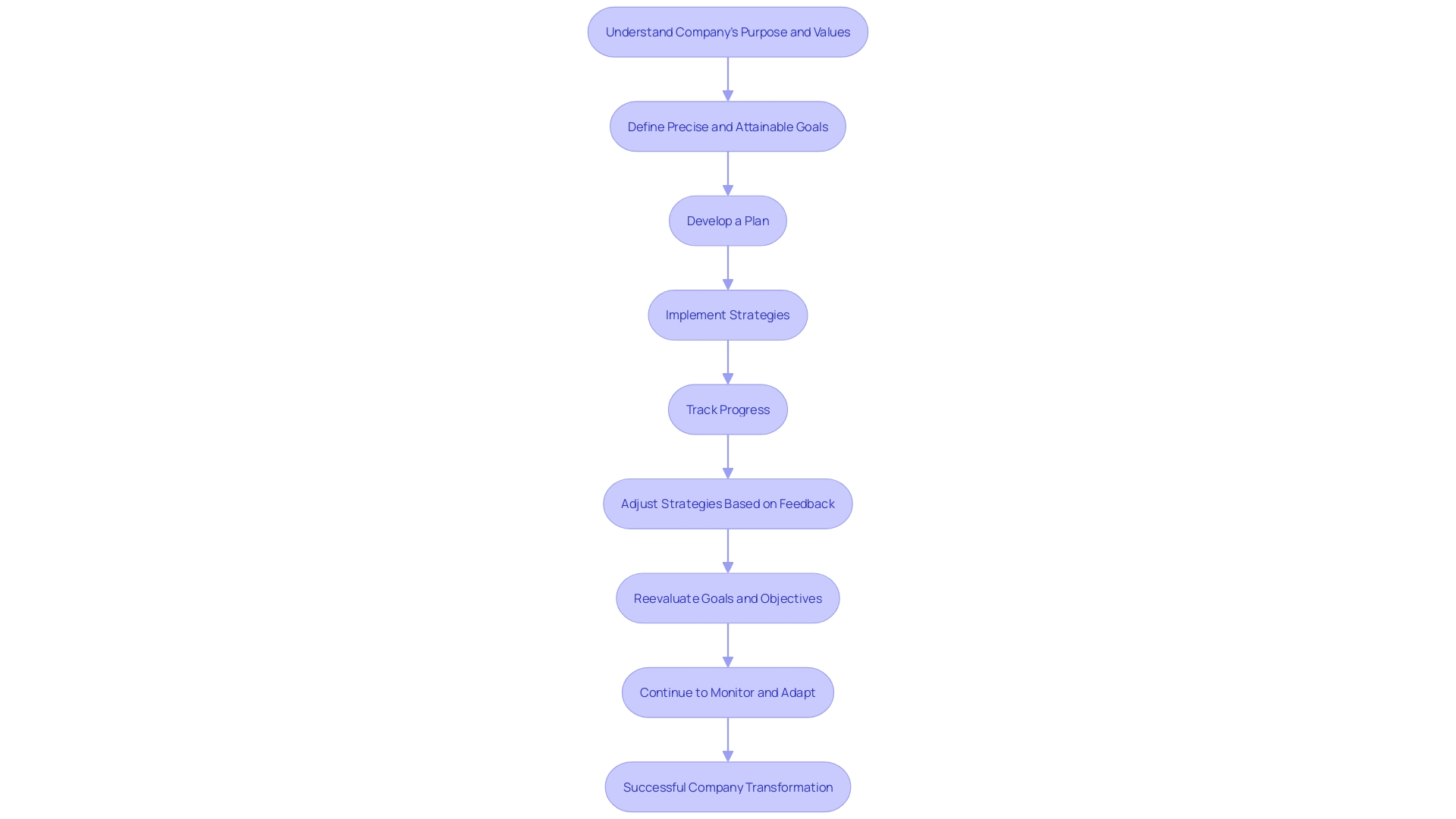
Financial Restructuring
Effective financial restructuring is crucial for revitalizing a company facing challenges. It entails a meticulous analysis of the company's financial health and pinpointing inefficiencies. With the goal of solidifying the foundation for enduring success, strategies are implemented to enhance cash flow, diminish debt, and maximize working capital. TBC Bank's mission to simplify lives reflects this by striving for improved digital product delivery times, thus offering exceptional banking experiences to customers and employees alike. Likewise, Bird's commitment to economical and eco-friendly transportation echoes the need for operational agility. Acknowledging the wisdom of James Mohs, who emphasizes the importance of exploring all options before bankruptcy, the process of financial restructuring should be seen as a proactive measure. Analyzing financial statements and assessing revenue growth, profit margins, and investment returns provide a transparent fiscal position. This in-depth understanding guides pivotal decisions regarding future financial strategies and resource distribution.

Cost Efficiency Strategies
For companies encountering financial difficulties, a strategic method for expense control can be a crucial element of a successful recovery. It's about more than just cutting expenses; it's about optimizing operations for efficiency and value. Take Costco, for example, whose leaders practice disciplined experimentation by asking three critical questions before adopting new services or products. This approach ensures that they do not succumb to market pressures or dilute their competitive advantage with unprofitable ventures. Similarly, the story of BaunIt underscores the importance of aligning organizational behavior and procedures with productivity goals, even when tough personnel decisions are required. Companies that navigate economic disruptions adeptly often emerge with a reputation for being well-managed and profitable, attracting customers, partners, and employees alike. These enterprises are characterized by their strategic investments, agility, and technological enhancements that streamline efficiency. As the U.S. economy pivots towards recovery, businesses that prioritize long-term value maximization rather than short-term profits position themselves for sustainable success. This is evidenced by the growing critique of new-century enterprises that emphasize rapid growth over solid organizational structures and profitability, highlighting the necessity of a balanced approach to financial management and operational excellence.
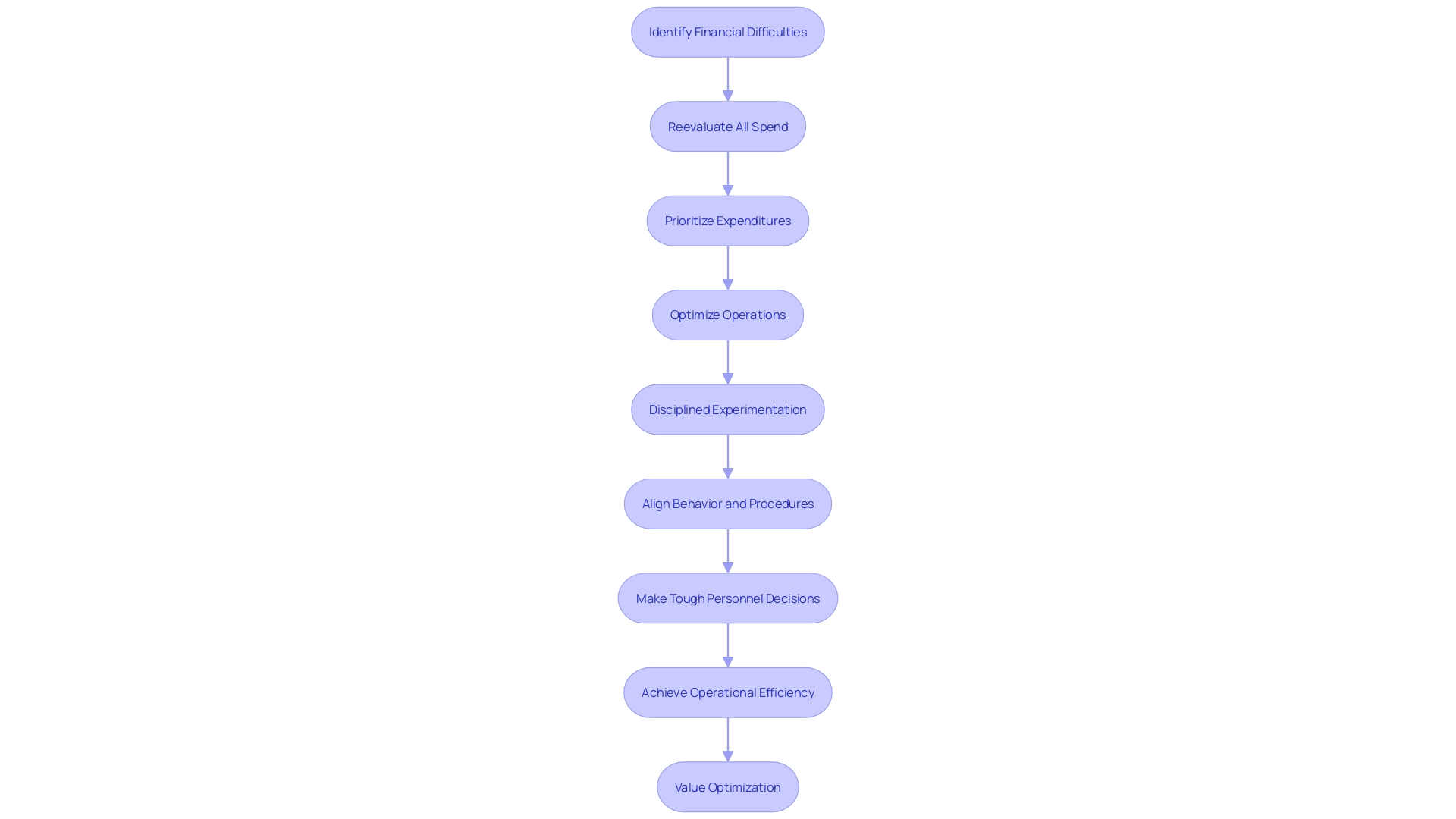
Asset Retrenchment
Asset retrenchment is a critical strategy for revitalizing an organization's financial health. It encompasses a thorough assessment and shrewd management of assets to identify those that are underperforming and, therefore, candidates for divestiture. Additionally, it involves the strategic sale of non-core assets, which can provide a much-needed injection of liquidity. Repurposing existing assets opens up new avenues for revenue, further bolstering the organization's fiscal standing. For instance, consider IBM's strategic reversal from contributing to employee 401(k) accounts to reviving its traditional pension plan, an innovative move that reflects a deep understanding of asset utilization to maximize value. Such maneuvers not only enhance profitability but also fortify the organization's financial foundation, positioning it for sustainable success in a competitive marketplace.
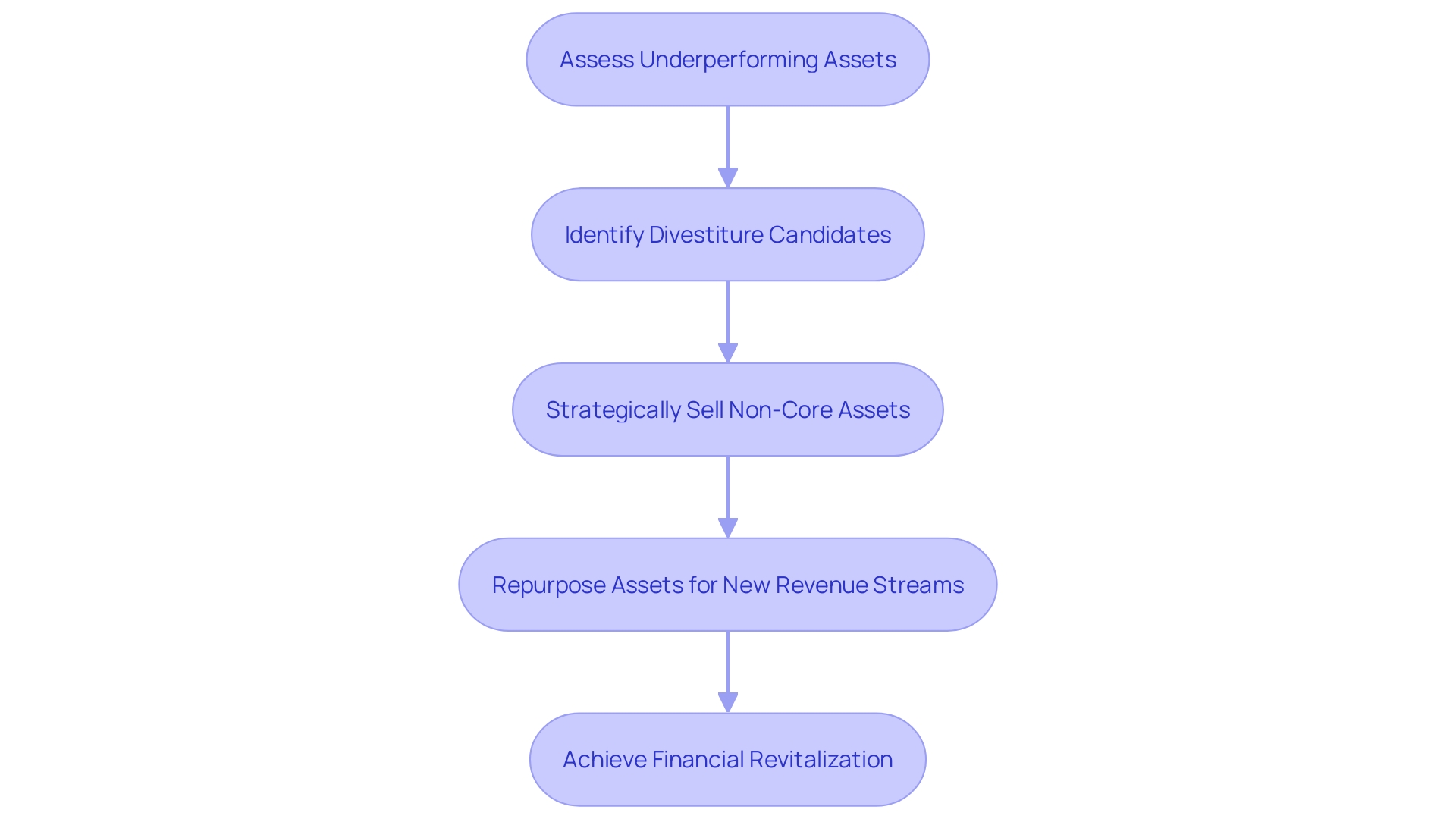
Strategic Repositioning
Effective strategic repositioning is more than just a necessary step in business turnaround; it's a proactive measure to ensure a company remains relevant in an ever-evolving industry. It's about thoroughly comprehending dynamics, identifying emerging opportunities, and devising strategies that resonate with the evolving preferences of customers. A successful repositioning hinges on the ability to adapt swiftly to customer demands, thus bolstering the organization's competitive edge and propelling growth. For example, when companies like Kodak and Xerox encountered technological obsolescence, their inability to adapt led to a downfall from market dominance to becoming cautionary tales of what occurs when innovation isn't embraced. On the other hand, through consistent observation of customer behavior, addressing feedback, and restructuring operational strategies, companies can prevent such outcomes. As evidenced by McKinsey's Global Survey on transformations, a wide range of deliberate actions reflecting strong will, skill, and rigor can significantly raise the odds of a successful transformation, ensuring both immediate and sustained improvements.
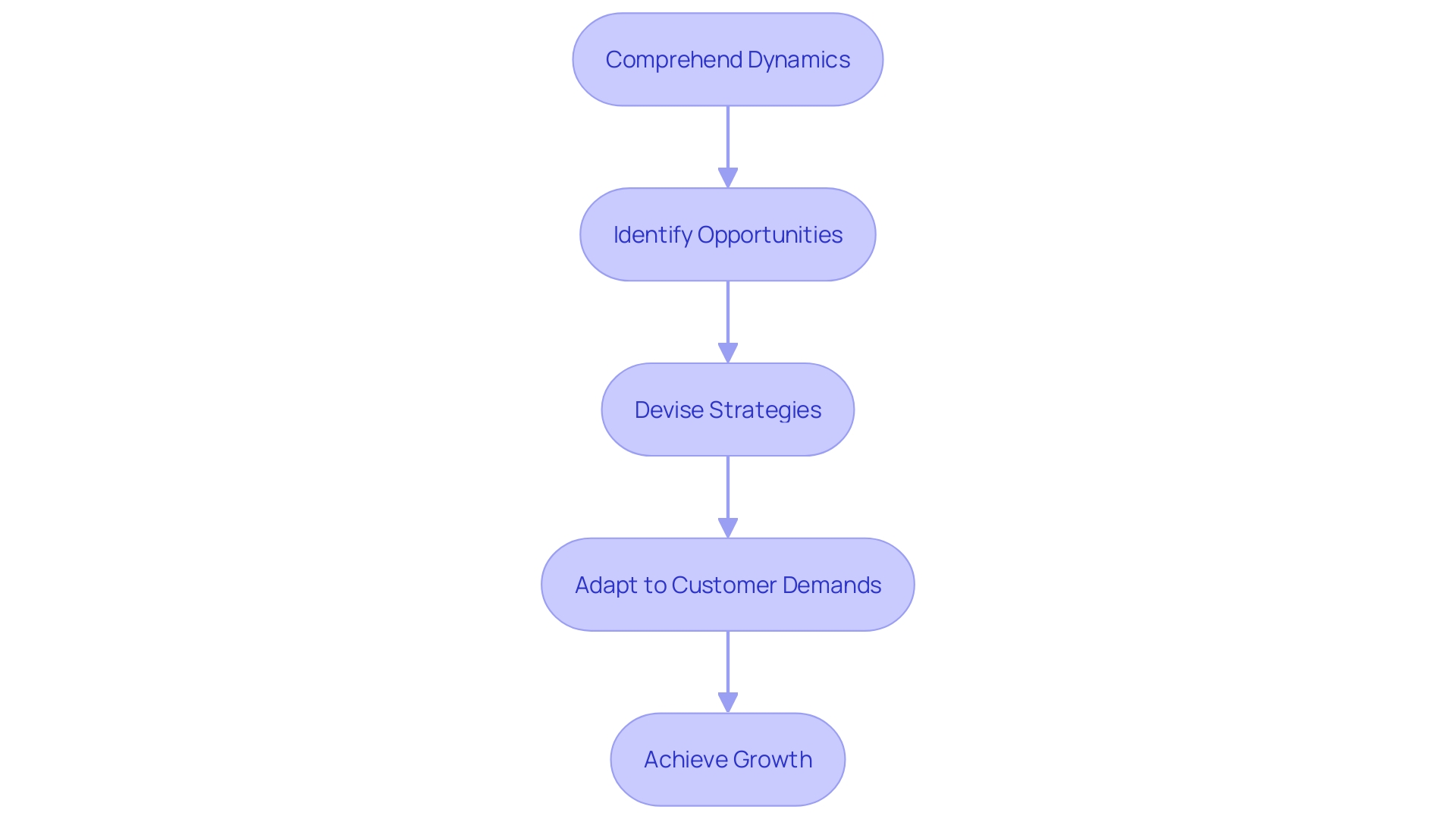
Change Management and Leadership Alignment
The key to a successful business transformation lies not only in developing an efficient strategy, but also in the crucial aspects of management and ensuring that leadership fully embraces the new direction. The crucial aspect is to involve every level of the company in the turnaround plan, conveying a distinct vision for transformation and empowering employees to actively contribute in the process. This approach fosters a culture of transformation where leaders promote the implementation of the strategy, thus propelling the organization towards recovery and growth.
For instance, TBC Bank, a prominent financial institution in Georgia, exemplified this by streamlining its operations to enhance digital product delivery, thereby improving customer and employee experiences. Similarly, Stora Enso, a Finnish company with centuries-old roots in paper manufacturing, recognized emerging market trends and transformed into a renewable materials company by innovating sustainable products.
Such transformations are supported by data indicating that a clear rationale for transformation, comprehensible to all stakeholders, significantly reduces the likelihood of failure. Based on Bryan Solis's study, competitive pressures and the pursuit of growth opportunities are primary factors for organizational transformation, with approximately 80% of companies requiring adjustment every two to five years to flourish. Furthermore, technology advancements continue to be a predominant driver for change, although adaptation rates lag behind.
In the context of Nissan's revival under Carlos Ghosn, we see the importance of producing the right products in the correct markets as a foundation for sustainable economic growth. Ghosn's leadership and experience were vital in reversing the company's fortunes, underscoring that traditional management methods are not universally applicable and must be tailored to the specific cultural and operational context of a business.
The McKinsey Global Survey on transformations highlights that a transformation's success hinges on a range of actions that embody the effort's will, skill, and scope. It's crucial to engage impacted functions from the beginning, assign a distinct leader from senior management for the initiative, and have a visible supporter who can motivate and guide the transformation.
Ultimately, effective turnaround strategies require a profound comprehension of the factors that propel transformation, the strategic alignment of leadership, and a commitment to fostering a culture of adaptability and innovation throughout the organization.
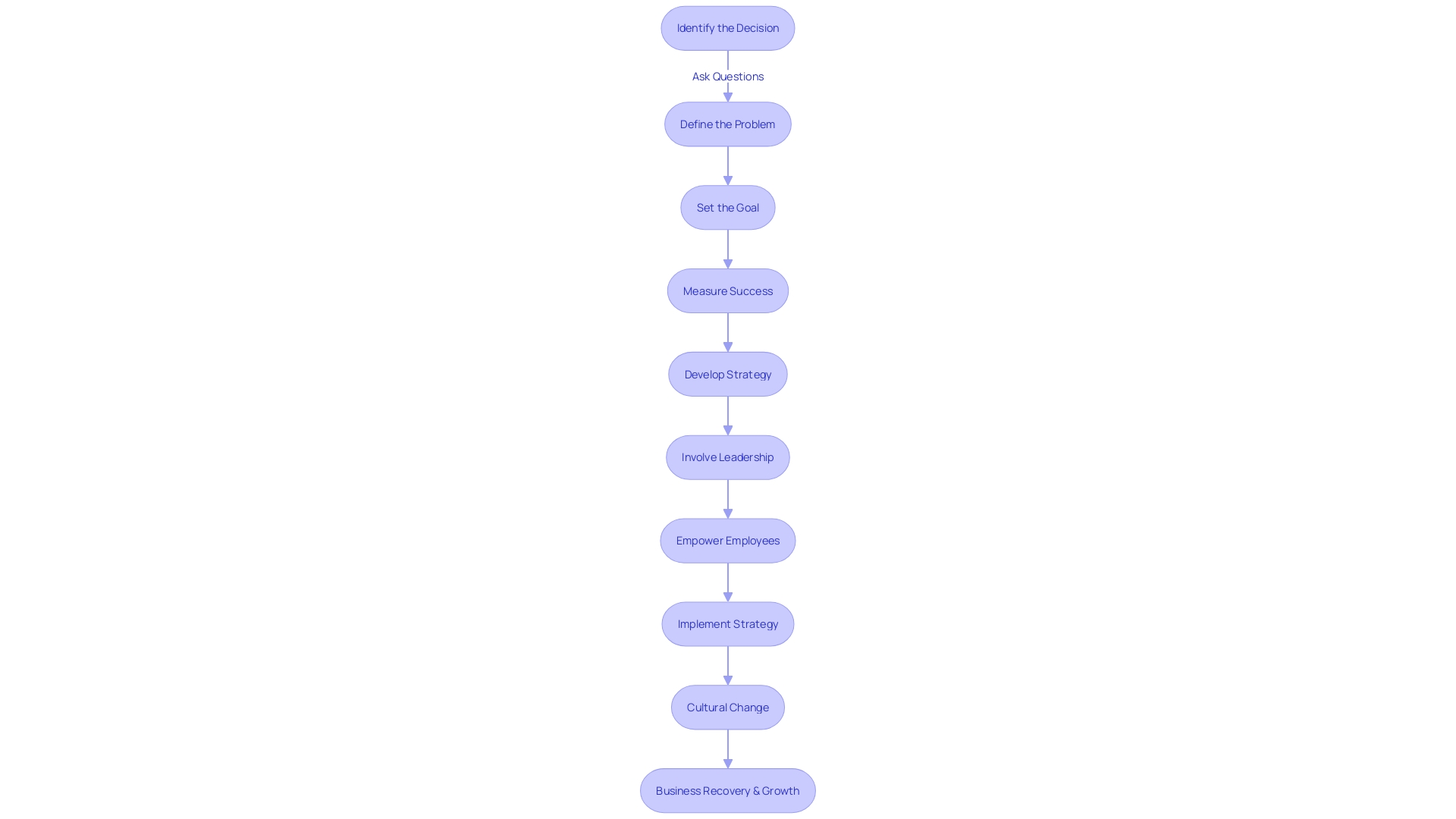
Employee Engagement and Communication
Throughout a corporate transformation, it is crucial to guarantee that your staff members are not only aligned, but also actively participating in the transformation process. This requires open, transparent communication channels and the inclusion of employees in the decision-making process. Take Nets, for example, a leading provider of digital payment solutions with a 50-year legacy, which faced the challenge of making technical data accessible and engaging for their employees. As Karmela Peček, an Instructional Designer at eWyse Agency, points out, the goal was to transform complex information into formats that motivate self-discovery among users. Similarly, Lauren Howe's observations on CEO communications during earnings calls highlight the impact of expressing genuine concern for employee well-being on investor perception, especially during crises like the COVID-19 pandemic.
The engagement of employees is not just a feel-good factor; it's a strategic imperative. Current data shows that approximately 72% of workers globally are engaged in their jobs, with industries like New Tech, Professional Services, and Science and Research leading the way in engagement scores. In contrast, service and manual labor sectors like Government, Entertainment, and Food and Beverage lag slightly behind. These figures underscore the importance of maintaining high engagement levels, especially during transitions that require a collective shift in mindset, from mergers to adopting new technologies.
Leaders must adopt a dual perspective that recognizes both the external actions required for change, such as policy updates or restructurings, and the internal psychological journey that employees experience during transitions. This understanding can help mitigate the stress and negative emotions that 41% of workers reportedly experience, according to a global poll. By effectively managing this process, organizations not only retain their top talent but also build a resilient culture that's equipped to face future challenges. This approach to employee engagement, exemplified by companies like Nets and supported by the latest research, can be a cornerstone of a successful turnaround strategy.
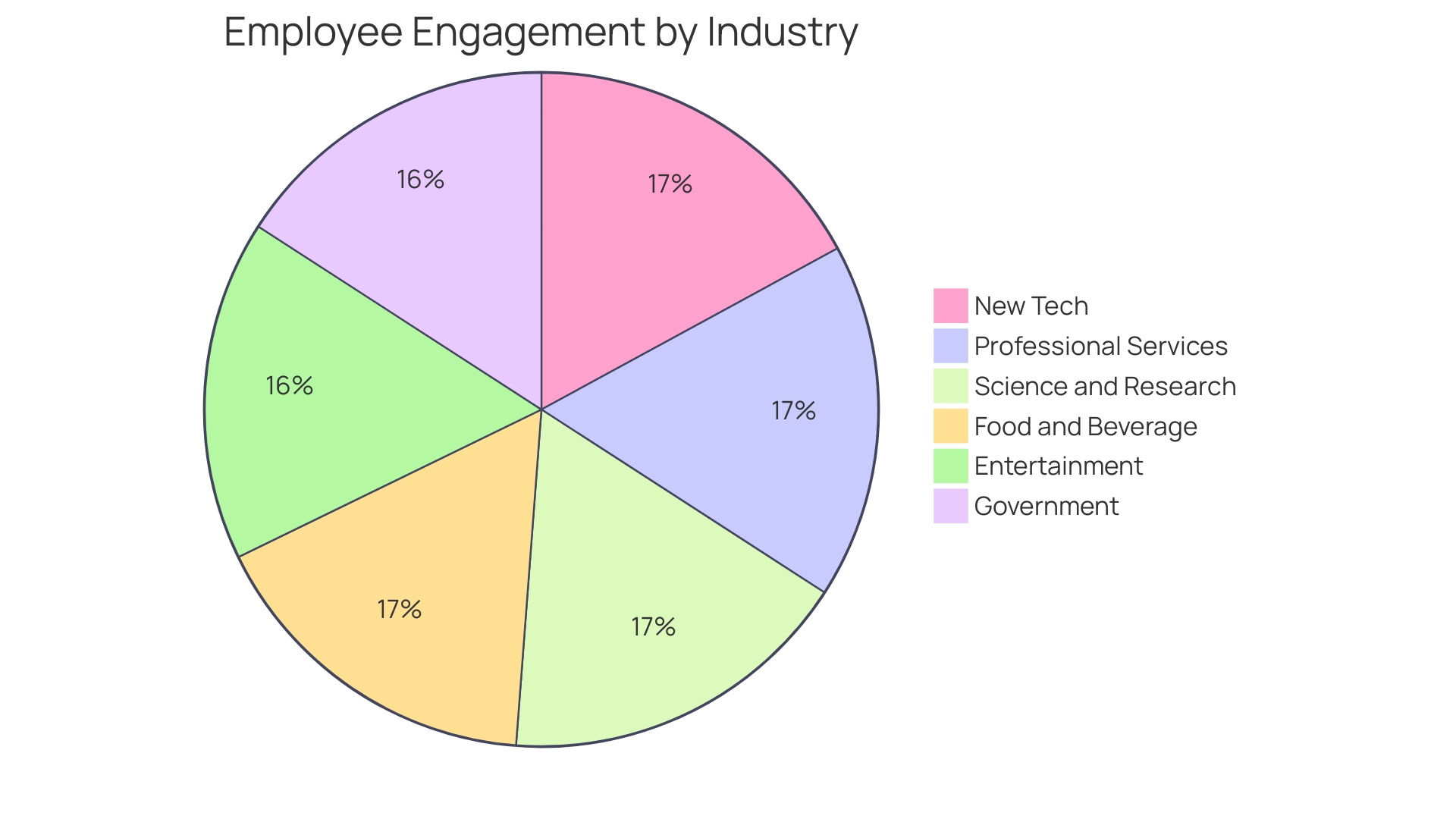
Stakeholder Engagement and External Support
Stakeholder engagement is a critical element in orchestrating a successful turnaround strategy. By fostering open communication and cultivating trust with key players like suppliers, customers, and investors, organizations can tap into a wealth of knowledge and support. This collaborative approach is exemplified by the International Council for the Exploration of the Sea, which unites thousands of scientists from various institutes to advance our understanding of marine ecosystems. Their efforts emphasize the significance of a comprehensive platform to enhance reach and impact, which is equally crucial in turnarounds.
Similarly, the idea of a 'regenerative enterprise' highlights the importance of stakeholder involvement in establishing sustainable and socially responsible models. By adopting advanced analytics and AI, businesses can swiftly adapt to external changes, thus ensuring longevity and robustness in a volatile market. In this spirit, Byju's strategic move to invite investors to participate in a rights issue illustrates the power of engaging stakeholders in an organization's revival narrative.
To navigate the intricacies of stakeholder engagement, it's advisable to consider the 10 recommendations outlined in a recent report. These include recognizing engagement as an ongoing process, understanding the local context, and initiating early dialogue. Moreover, businesses should take into account the counsel of Natura &Co, which attributes its strategic decision-making to a stakeholder-inclusive approach, enshrined in its bylaws. This is complemented by Gerdau's focus on fostering a culture conducive to sustainable transformations.
The demand for agile transformation is emphasized by Bryan Solis's research, which discovered that competitive pressures and market opportunities are propelling change for 51% of enterprises, with an additional 41% recognizing the need to evolve due to competitive pressures. As companies grapple with these challenges, McKinsey's Global Survey on transformations reveals that adopting a comprehensive set of actions can significantly bolster the chances of achieving and sustaining performance improvements. These findings indicate a proactive and inclusive approach to stakeholder engagement that can not only facilitate a successful turnaround but also establish a competitive advantage in today's dynamic environment.
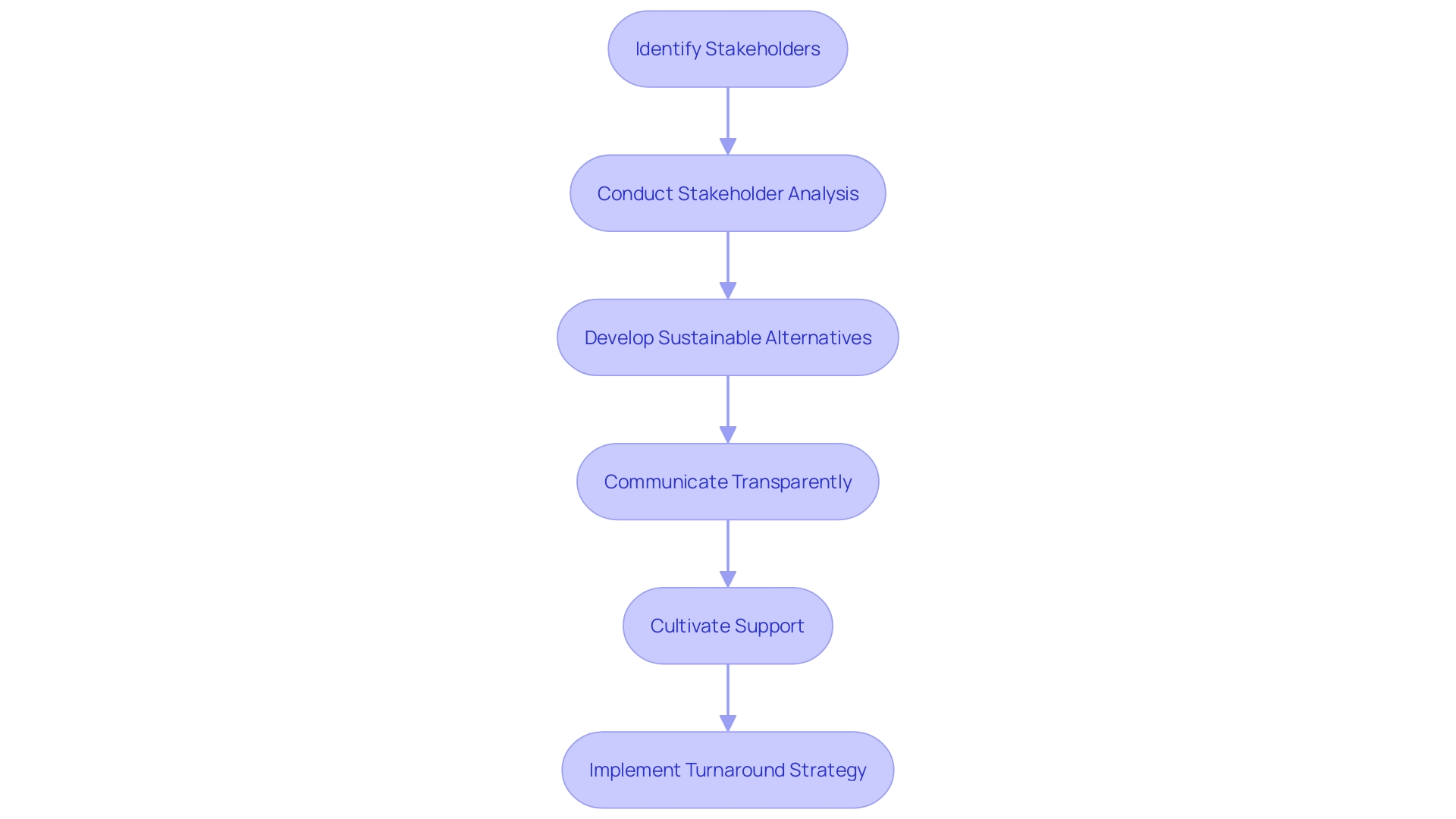
Monitoring and Adjusting the Turnaround Plan
Achieving operational excellence and ensuring the success of turnaround strategies demand consistent monitoring and refinement. It's imperative to track progress through key performance indicators (KPIs) and adapt in response to new insights or deviations from the expected trajectory. Through vigilant oversight and iterative adjustments, businesses can maintain alignment with their strategic goals, responding dynamically to the evolving marketplace.
Vigilance in quality control and forecasting precision is also crucial. As we learn from the example of an organization that improved its product quality while simultaneously refining forecasting methods, the dual approach helps mitigate unforeseen complications and aligns production schedules with customer needs. The experience of this organization also emphasizes the importance of sharing knowledge and methodologies, such as Monte Carlo Simulations, which can provide more accurate timelines for product development and delivery in complex environments like on-premise installations.
The significance of sustainable practices resonates, especially with the announcement of a Fair Payment Code that incentivizes timely payments to suppliers. This initiative highlights the importance for companies to uphold healthy cash flows and relationships throughout the supply chain, contributing to overall resilience and growth.
Effective project management, as emphasized by Benjamin Franklin’s timeless advice on the value of time, requires accurate planning and timelines. By setting clear milestones and schedules, organizations can avoid the pitfalls of underestimation and overestimation, ensuring that all team members are synchronized and contributing effectively to the project’s success.
Finally, as we consider the broader context of commercial transformation, statistics reveal that a significant portion of enterprises must adapt every few years to remain competitive, with technological advancements being a primary catalyst. This reality emphasizes the necessity for continuous measurement and management of processes, aligning with Peter Drucker's claim that effective management is based on the ability to measure.

Evaluating the Success of the Turnaround Strategy
To measure the effectiveness of a business turnaround plan, it is essential to monitor and analyze specific indicators that depict the well-being and direction of the organization. These metrics include financial indicators such as revenue growth, profit margins, and cash flow, which provide a quantitative measure of performance improvements. Moreover, customer satisfaction levels serve as proof of the company's ability to meet demands and sustain customer loyalty, while employee engagement scores indicate the internal health, reflecting workforce morale and productivity. A holistic evaluation of these metrics offers critical insights, allowing leaders to pinpoint triumphs and diagnose areas in need of refinement, ensuring that the turnaround strategy evolves in response to real-time feedback and changing market conditions.
Conclusion
In conclusion, successfully navigating a business turnaround requires a strategic and proactive approach. CFOs can employ various key strategies and best practices to revitalize their organizations. This includes conducting a thorough assessment, undertaking root cause analysis, setting clear goals, implementing financial restructuring and cost efficiency strategies, strategically repositioning the company, managing change and aligning leadership, engaging employees and stakeholders, monitoring and adjusting the turnaround plan, and evaluating the success of the strategy.
By following these steps, CFOs can chart a course towards recovery and sustained growth. They can identify underlying factors contributing to the company's struggles, implement targeted interventions, set precise and measurable goals, optimize financial health, streamline operations, adapt to market demands, empower employees, cultivate stakeholder relationships, and ensure ongoing monitoring and refinement. These strategies will enable organizations to overcome challenges, thrive in the ever-evolving marketplace, and build a competitive edge.
It is crucial for CFOs to take a proactive and action-oriented approach, embracing change and innovation. By employing these strategies, CFOs can revitalize their organizations, position them for sustained success, and navigate through the complexities of the business landscape. The journey towards a successful turnaround requires diligence, adaptability, and a commitment to continuous improvement.
With a strategic and proactive mindset, CFOs can lead their organizations to overcome challenges, achieve operational excellence, and thrive in the ever-changing marketplace.




